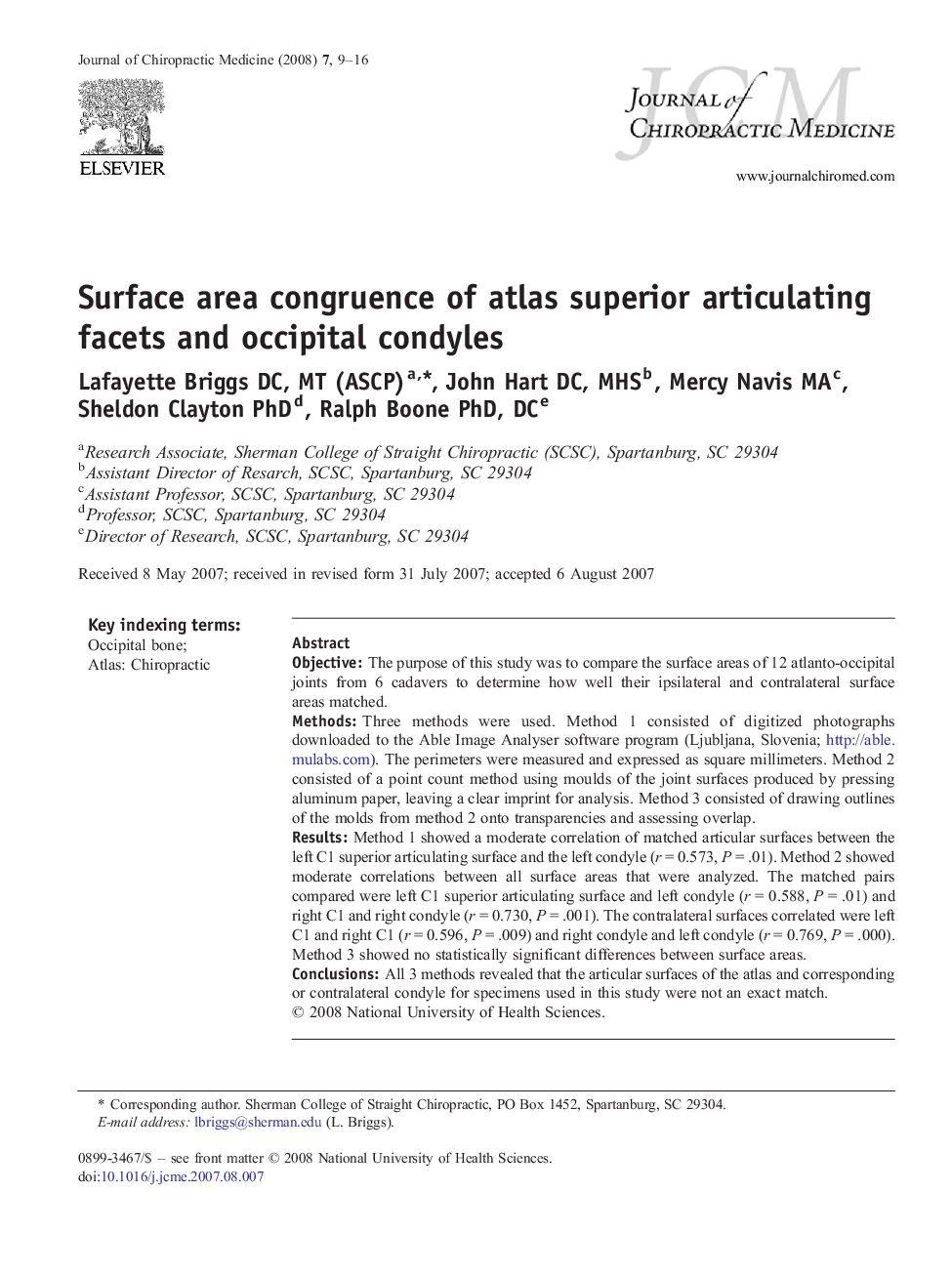| Article ID | Journal | Published Year | Pages | File Type |
|---|---|---|---|---|
| 2620412 | Journal of Chiropractic Medicine | 2008 | 8 Pages |
ObjectiveThe purpose of this study was to compare the surface areas of 12 atlanto-occipital joints from 6 cadavers to determine how well their ipsilateral and contralateral surface areas matched.MethodsThree methods were used. Method 1 consisted of digitized photographs downloaded to the Able Image Analyser software program (Ljubljana, Slovenia; http://able.mulabs.com). The perimeters were measured and expressed as square millimeters. Method 2 consisted of a point count method using moulds of the joint surfaces produced by pressing aluminum paper, leaving a clear imprint for analysis. Method 3 consisted of drawing outlines of the molds from method 2 onto transparencies and assessing overlap.ResultsMethod 1 showed a moderate correlation of matched articular surfaces between the left C1 superior articulating surface and the left condyle (r = 0.573, P = .01). Method 2 showed moderate correlations between all surface areas that were analyzed. The matched pairs compared were left C1 superior articulating surface and left condyle (r = 0.588, P = .01) and right C1 and right condyle (r = 0.730, P = .001). The contralateral surfaces correlated were left C1 and right C1 (r = 0.596, P = .009) and right condyle and left condyle (r = 0.769, P = .000). Method 3 showed no statistically significant differences between surface areas.ConclusionsAll 3 methods revealed that the articular surfaces of the atlas and corresponding or contralateral condyle for specimens used in this study were not an exact match.
